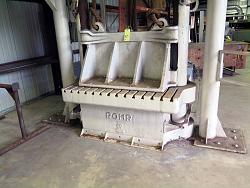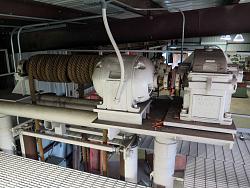1942 enormous rope drop hammer.
Fullsize image: https://upload.wikimedia.org/wikiped...d%2C_Calif.jpgHuge drop hammers work day and night forming sheet metal parts for United Nations bombers and fighters at the North American Aviation plant, Inglewood, Calif.
Previously:
1877 Le Creusot world's largest steam hammer
Howrah steam hammer - videos and photos
Enormous power hammer - video
Most dangerous power hammer design?
334 year old Häfla Hammer in use


 LinkBack URL
LinkBack URL About LinkBacks
About LinkBacks




 Reply With Quote
Reply With Quote



Bookmarks